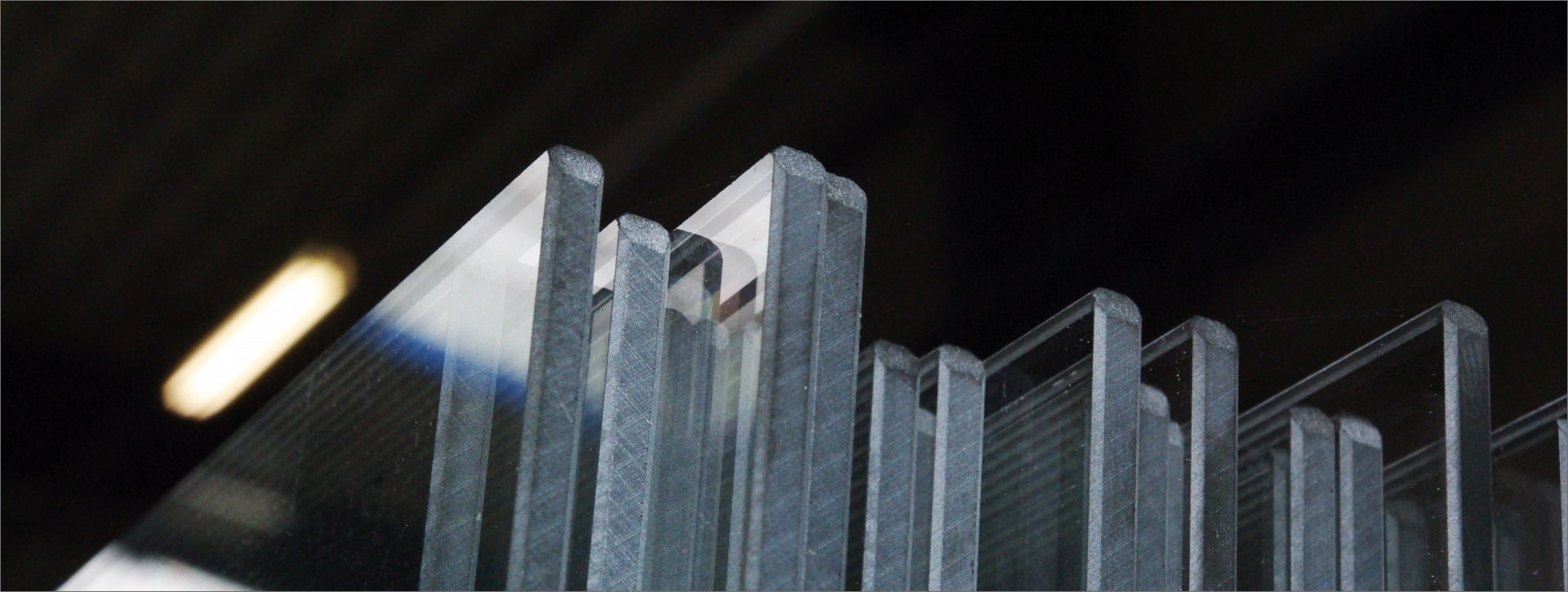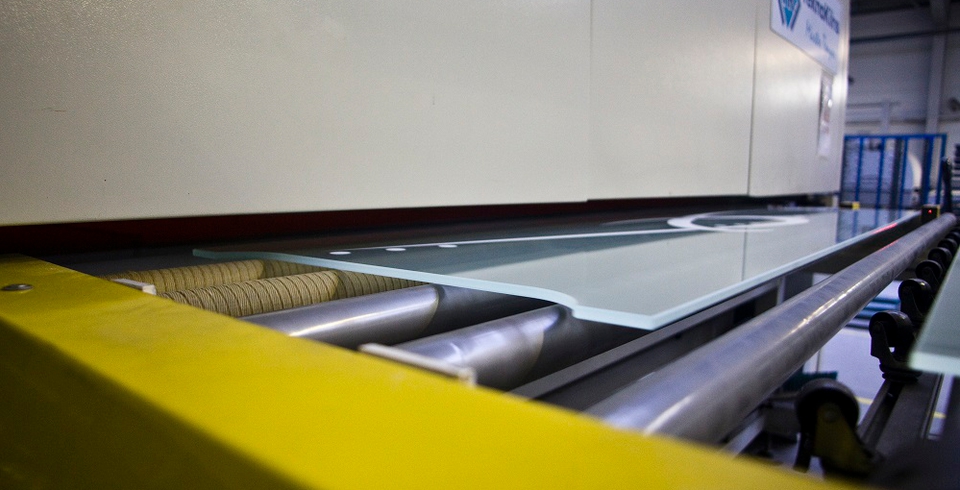Tempering

Tempering
Download PDF
Glass tempering is a deliberate action aiming at creating safety glass. It consists in heating glass to a sufficiently high temperature and then cooling it down quickly. This process makes the material more durable, but its appearance does not change – the glass is still smooth and aesthetic. The end product is marked with the abbreviation ESG (from German Einscheiben Sicherheitsglas).
Properties of tempered glass:
- increased resistance to mechanical stress, i.e. a 5-7 times higher mechanical resistance compared to regular glass,
- increased resistance to thermal stress. It can withstand temperature differences up to about 200°C whereas regular non-tempered glass withstands temperature differences around 30°C.
A characteristic feature of this type of glass is the fact that it cracks into small pieces with unclear edges. This minimizes the risk of serious injury to a person standing nearby.
The functional features of flat glass resulting from tempering have significantly expanded its range of applications. Tempered glass is used primarily in the construction industry, mainly due to safety requirements, as a single double-glazed unit or its component. It is also used in laminated glass and external glazing. This product is also used inside buildings as part of partitions, doors, balustrades, stairs or glass floors. Tempered glass also has aesthetic qualities. Therefore, it can be used as a decorative element by architects, designers or as furniture or household appliances in interior design. Tempered glass can be colorless, colorful, enameled, coated or covered in film. All these variants give glass specific properties.
Tempered glass should meet certain quality requirements. These requirements, as well as the manner of testing tempered glass, are presented in the PN-EN 12150-1 standard: Glass in the construction industry. Thermally tempered sodium lime silicate safety glass. Part 1: Definitions and description.
All manufacturers of tempered glass are obliged to obtain certificates of quality of the glass that they manufacture in accordance with the requirements of the standard above to ensure the comfort of using tempered glass in terms of its safety.
Minimum glass size: 250 x 35 mm
Maximum glass size: 4400 x 2200 mm
Glass thickness: 4 - 19 mm

Production order processing department

Paulina Pawelec
Sales Manager Tel: 730 877 333 p.pawelec@sell-glass.pl
Aleksandra Wawruniak
Sales Specialist Mob: 500 718 068 a.wawruniak@sell-glass.pl